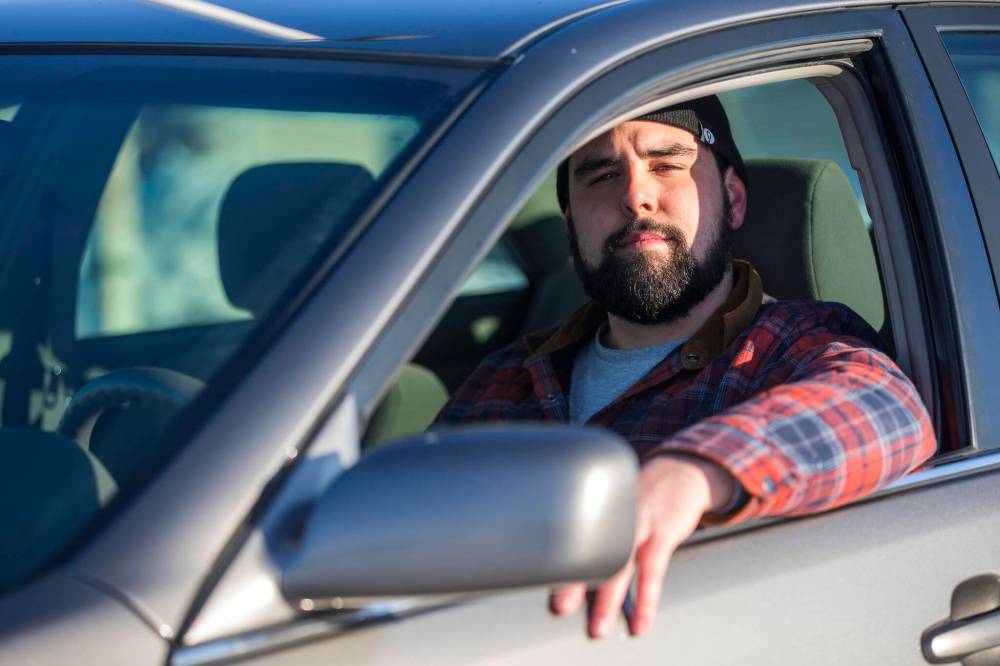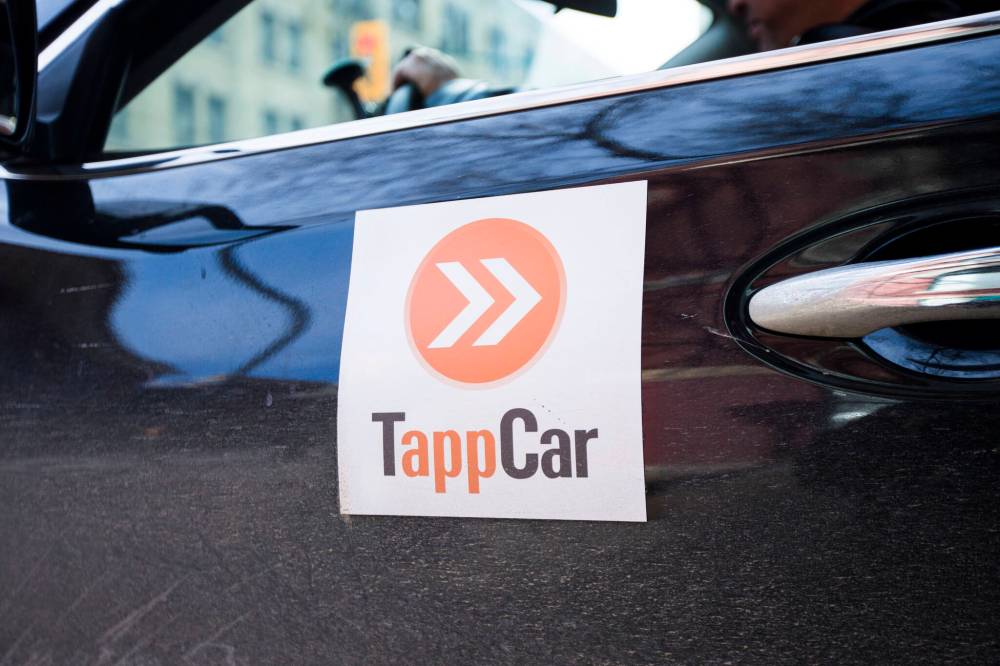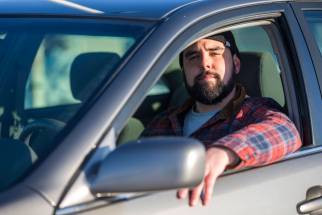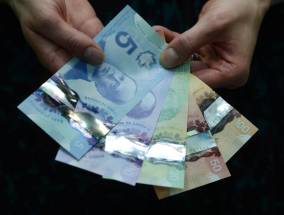Skip the side-hustle Food delivery and ride-sharing drivers are parking their cars because soaring gas prices are exhausting their profits
Read this article for free:
or
Already have an account? Log in here »
To continue reading, please subscribe:
Monthly Digital Subscription
$0 for the first 4 weeks*
- Enjoy unlimited reading on winnipegfreepress.com
- Read the E-Edition, our digital replica newspaper
- Access News Break, our award-winning app
- Play interactive puzzles
*No charge for 4 weeks then price increases to the regular rate of $19.00 plus GST every four weeks. Offer available to new and qualified returning subscribers only. Cancel any time.
Monthly Digital Subscription
$4.75/week*
- Enjoy unlimited reading on winnipegfreepress.com
- Read the E-Edition, our digital replica newspaper
- Access News Break, our award-winning app
- Play interactive puzzles
*Billed as $19 plus GST every four weeks. Cancel any time.
To continue reading, please subscribe:
Add Free Press access to your Brandon Sun subscription for only an additional
$1 for the first 4 weeks*
*Your next subscription payment will increase by $1.00 and you will be charged $16.99 plus GST for four weeks. After four weeks, your payment will increase to $23.99 plus GST every four weeks.
Read unlimited articles for free today:
or
Already have an account? Log in here »
Hey there, time traveller!
This article was published 09/03/2022 (1370 days ago), so information in it may no longer be current.
It’s been three weeks since Brett Parkin last delivered food.
He’d gotten used to his pandemic-era side-hustle: drive around Winnipeg twice a week, drop off snacks and meals, make some extra money.
Working for SkipTheDishes had become something of a hobby, the 25-year-old said.
“I’ve really enjoyed it, (doing it) every once in a while, just exploring the city, delivering food,” Parkin said.
But, the record-breaking fuel prices have made Parkin hang up his keys — at least temporarily.
“I decided… it wouldn’t be worth my time while the gas is super expensive,” Parkin said.

Gas prices in the city hit an average $1.74.3 per litre on Wednesday, according to fuel site GasBuddy. Delivery app drivers pay for their own gas.
Parkin figured he’d still make money if he picked up a shift, but the profit would be marginal compared to even months ago. He’s not financially dependent on the job — he works full-time as a purchaser — and he’s in no rush to get back on the road.
If fuel prices dropped to $1.30 per litre, Parkin said he’d begin delivering again.
Ravinder Dhaliwal is still driving for a food delivery app. He’s watched his earnings decrease as the cost of fuel rises.
“If it’s $50 in income, then $10, $15… $20 (is gas),” he said Wednesday.
Drivers are paid delivery fees plus tips, Parkin said. If a driver makes less than $7 on a SkipTheDishes order, the company will top up the exchange to $7, he said.
“The drivers which I’ve spoken with, most of them (say), ‘The gas prices are so high that we don’t want to drive anymore.’” – TappCar COO Sourabh Shubham
TappCar’s Winnipeg branch has lost nearly 50 per cent of its drivers over the last month, according to Sourabh Shubham, the ride sharing app’s chief operating officer.
“The drivers which I’ve spoken with, most of them (say), ‘The gas prices are so high that we don’t want to drive anymore,’” Shubham said.
The company now has a fleet of about 45, down from an early February count of 75 to 85.
The drop comes as TappCar’s business picks up speed — more customers are requesting rides as public health restrictions ease. Their requests are timing out because there aren’t enough drivers, Shubham said.
“If you have a customer, and they’re trying to book a TappCar about two or three times, and (they) get timed out every time, then (they) go to a different company,” he said.
TappCar has lost customers, Shubham said.

“If you can get a guaranteed ride on the other company, why would you come back to us?”
TappCar is working on increasing pay for its drivers by either raising its commission three to five per cent, or by providing a gas subsidy. It’s still in the works, Shubham said.
It’s difficult, he added — the company is small and can’t afford to alienate customers.
“We cannot increase the fare right now, because we’re competing with other companies in the market like Uber,” Shubham said. “The customers… won’t be willing to pay more.”
TappCar is planning on raising drivers’ pay after two years of decreased revenues during the pandemic.
“The only thing we can do to survive, at the moment, is to bring the drivers on board,” Shubham said. “(Paying more) would be a loss on our end, but there’s not much we can do.”
“The only thing we can do to survive, at the moment, is to bring the drivers on board. (Paying more) would be a loss on our end, but there’s not much we can do.” – Sourabh Shubham
Increasing commission fees or somehow subsidizing gas bills are the best ways to retain drivers, said David Camfield, a labour studies professor at the University of Manitoba.
“If it’s simply not worth it for the drivers, then companies are left with… either (offering) a reduced level of service, or (finding) a way to compensate the drivers,” he said.
App users who wait longer for goods and services might stop ordering altogether, Camfield said.
“It could end up boomeranging and really hurting the companies,” he said.
Drivers for delivery apps are often independent contractors, which is why businesses don’t have to pay their mileage, Camfield said. If they were classified as employees, they’d likely be compensated, he added.
“Transportation companies right now are readjusting prices to support the food retail industry. Well, with food service, it should be the same thing,” said Sylvain Charlebois, a Dalhousie University food distribution and policy professor.
“Delays could actually compromise the quality, the temperature of the products that you’re delivering. It will have an impact on demand.” – Sylvain Charlebois
Delays in food delivery due to a lack of drivers could negatively affect restaurateurs, he said.
“Delays could actually compromise the quality, the temperature of the products that you’re delivering,” he said. “It will have an impact on demand.”
Restaurants might start giving bonuses to their own drivers to keep them on the road, he said.
Uber provided no details on whether it’s changing its pay structure but said it’s “looking into how best to help,” according to a spokesperson.
“At the end of the day the platform only works for riders if it works for drivers, so we’ll continue to listen and adapt over the coming weeks and months,” the spokesperson said in a written statement.
SkipTheDishes and DoorDash did not respond to questions by print deadline.
gabrielle.piche@winnipegfreepress.com

Gabby is a big fan of people, writing and learning. She graduated from Red River College’s Creative Communications program in the spring of 2020.
Our newsroom depends on a growing audience of readers to power our journalism. If you are not a paid reader, please consider becoming a subscriber.
Our newsroom depends on its audience of readers to power our journalism. Thank you for your support.












